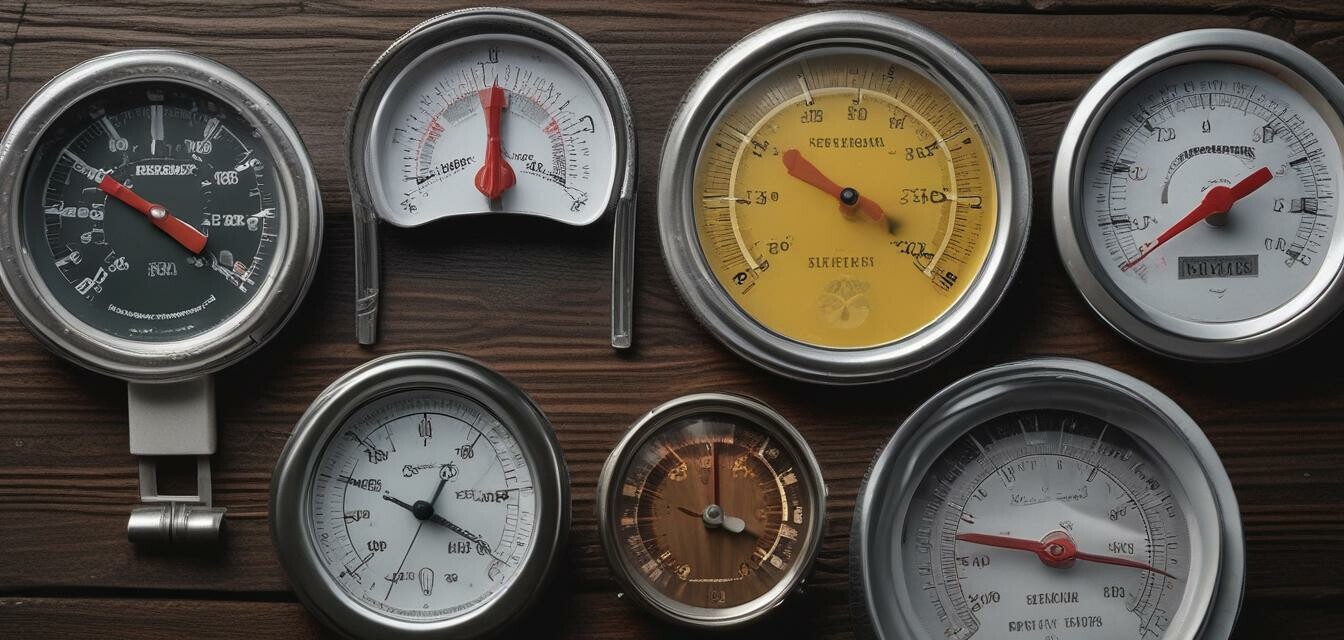
The Ultimate Guide to Kitchen Thermometers
Key Takeaways
- Understand the different types of kitchen thermometers.
- Consider factors like accuracy, ease of use, and features when choosing a thermometer.
- Explore various cooking needs to determine which thermometer best suits your kitchen.
Kitchen thermometers are essential tools for any cook, whether you're a home chef looking to master your craft or a culinary enthusiast eager to try new techniques. With several types of thermometers available, it can be challenging to choose the right one for your cooking needs. In this guide, we'll explore the various types of kitchen thermometers and offer tips to help you make an informed decision.
Types of Kitchen Thermometers
| Type | Description | Best For |
|---|---|---|
| Digital Thermometer | Fast and accurate readings with an easy-to-read display. | All cooking types, especially meat and candy. |
| Dial Thermometer | A classic design with a dial for reading temperatures. | Roasting meats and baking. |
| Infrared Thermometer | Measures surface temperature without contact. | Grilling and frying. |
| Probe Thermometer | A probe that stays in the food while it cooks. | Slow-cooking and large cuts of meat. |
| Instant-Read Thermometer | Gives quick temperature readings, but not meant for prolonged cooking. | Cooking at home for quick checks. |
Factors to Consider When Choosing a Kitchen Thermometer
Accuracy
Accuracy is paramount in cooking, especially when dealing with meats and baked goods. Look for thermometers that offer precise readings. Consider models with a calibration feature to ensure accuracy over time.
Ease of Use
The thermometer should be easy to operate. Digital thermometers usually provide the easiest interface, while some dial models may require a bit of practice.
Features
Different thermometers come with a range of features, such as:
- Backlit display for low-light conditions.
- Memory function to record previous temperatures.
- Waterproof or splash-proof designs for safety in the kitchen.
- Temperature alarms for added convenience.
Tips for Using Kitchen Thermometers
- Always insert the probe into the thickest part of the food for an accurate reading.
- Avoid touching bones with the thermometer, as it can give a false temperature.
- Clean the thermometer after each use to ensure it remains hygienic.
- Allow the thermometer to stabilize before reading the temperature.
Which Kitchen Thermometer is Right for You?
Choosing the right kitchen thermometer largely depends on your cooking style and specific needs:
- If you tend to cook meats, a probe or digital thermometer might be your best bet.
- For baking enthusiasts, an instant-read thermometer can provide precise results.
- For frying or grilling, an infrared thermometer can be remarkably effective.
Common Mistakes to Avoid
Now that you know the basics, here are some common mistakes to sidestep:
- Not calibrating your thermometer regularly.
- Using a thermometer that is not aimed at the right depth in the food.
- Relying solely on the thermometer without paying attention to visual cues.
Pros
- Improves cooking accuracy and results.
- Helps prevent foodborne illnesses by ensuring proper cooking temperatures.
- Enhances baking precision for better baked goods.
Cons
- Some models can be expensive.
- Requires regular calibration for accuracy.
- May suffer from battery issues in digital versions.
Conclusion
Kitchen thermometers are vital for taking your cooking to the next level. With this guide, you can now understand the various types available and the features to look for when making your selection. With the right thermometer, you will be able to ensure that your meals are cooked perfectly every time!
Explore more of our Cooking Buying Guides for a deeper understanding of kitchen essentials that elevate your culinary skills.